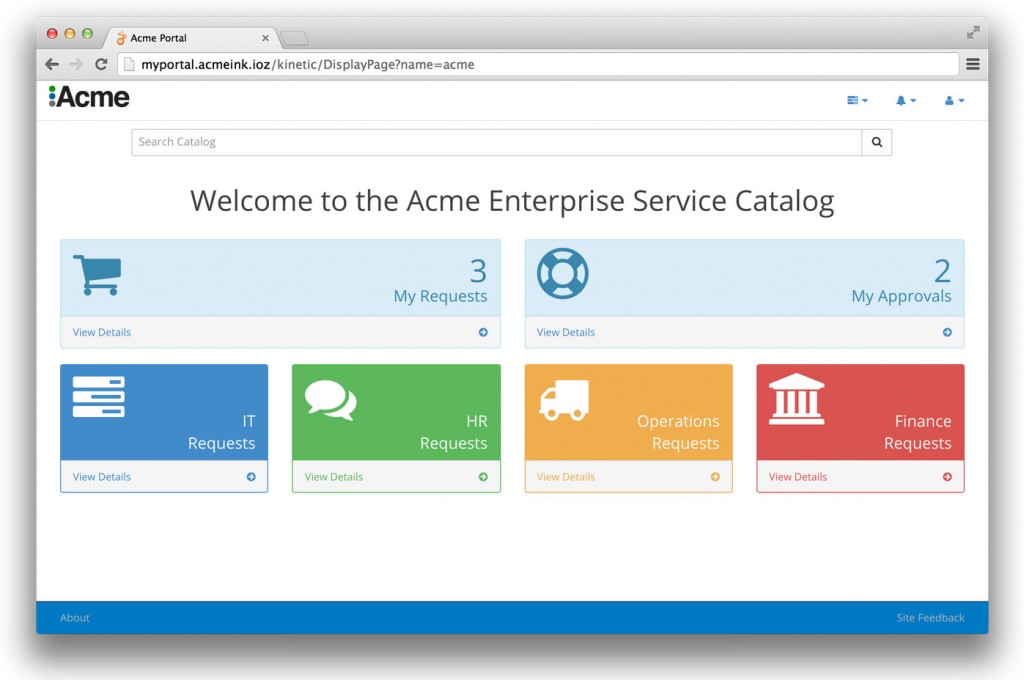What’s New at Kinetic: Building Smart in 2026
At Kinetic, we believe the future of Business Process Management isn’t bigger—it’s smarter.
“‘What’s the one thing human resource information system (HRIS) managers hope to accomplish’ with new HR technology?,” Aliah D. Wright asked recently on SHRM.org.

“‘What’s the one thing human resource information system (HRIS) managers hope to accomplish’ with new HR technology?,” Aliah D. Wright asked recently on SHRM.org.
The answer, she reported in Wanted: Amazon.com-like Experience with HR Tech, is to “improve user experience,” based on fresh research from Information Services Group (ISG).
 This isn’t surprising, given the link between workplace technology and employee satisfaction. Wright quotes Debora Card, a partner at ISG: “As the ‘war for talent’ heats up, CEOs recognize that their employees—especially Millennials—expect their interactions with HR departments to be as easy and engaging as shopping on Amazon.”
This isn’t surprising, given the link between workplace technology and employee satisfaction. Wright quotes Debora Card, a partner at ISG: “As the ‘war for talent’ heats up, CEOs recognize that their employees—especially Millennials—expect their interactions with HR departments to be as easy and engaging as shopping on Amazon.”
Implementing workplace technology that enables employees to easily request any services, products or resources they need to do their jobs is a key factor in attracting and retaining top talent. Too often, enterprises don’t apply the same level of focus on the user experience (UX) into designing interfaces to internal systems as into consumer-facing apps and ecommerce sites.
Yet as Blogging4Jobs CEO Jessica Miller-Merrell notes in Wright’s article, “HR needs to keep in mind that today’s talent pool is in the consumer marketplace, using technologies daily that they expect to be able to use at work. It’s time for the workplace to catch up and begin to leverage these technologies.”
One approach to addressing this situation is to completely replace the organization’s current HR software. SaaS-based HR technology may seem particularly appealing due to its low up-front cost.
But a “rip and replace” approach may not be the best way to improve the employee experience. Implementing new core management and control systems—even if cloud-based—is expensive in terms of learning curve and business process disruption. The organization loses the value of its investments, both direct and knowledge-based, in its existing HR software. And employees are still left with an HR system (even if one with an easier, mobile-friendly interface) that exists in a silo, separate from other internal service request systems (IT, facilities, finance, etc.).
An alternative well worth evaluating is the enterprise request management (ERM) model. This approach combines an intuitive, centralized portal interface with back-end process automation and integration software to give employees one “Amazon-like” place to order any type of enterprise shared service, products, or resources.
ERM leverages existing enterprise software investments, so the HR team can continue to use its familiar HR management tools. Graphical workflow tools enable HR managers to build their own “service items” for the ERM portal, with minimal technical assistance, so there’s no delay in waiting for service to be created by IT. There’s less cost to the enterprise, faster time to value, and minimal disruption for anyone; new processes can be mapped, tested, tweaked, and optimized before being moved live—and without any modifications to core management and control software platforms.
Furthermore, according to Wright, “As for their top HR organizational improvement to make between now and 2016, nearly a third of those surveyed said to enhance strategic alignment with the business…followed by…improvements in business processes (13 percent), (and) reducing costs (10 percent).”
ERM supports all of these goals. It not only provides a consumer-like experience for requesting services from any internal group or department, but also supports complex cross-functional processes like employee onboarding.
HR professionals are looking to embrace new technology to enhance the user experience for employees, as well as to improve business processes and cut costs. Implementing an ERM strategy enables organizations to accomplish these goals within a reasonably short time frame, and without the cost and disruption of total HR management software replacement.

At Kinetic, we believe the future of Business Process Management isn’t bigger—it’s smarter.

IT support automation uses software workflows, rule engines, AI/ML, and integrations to automate...

Business process reimagined is the strategic renewal of how work gets done by combining modern digital...